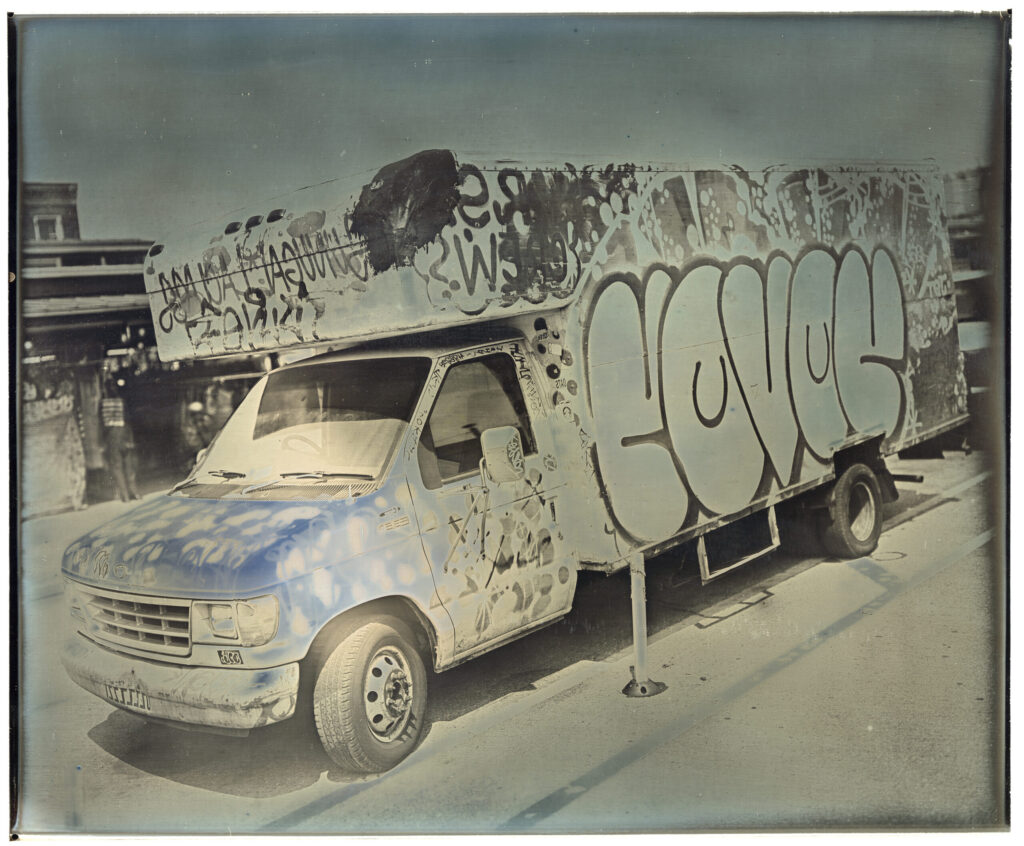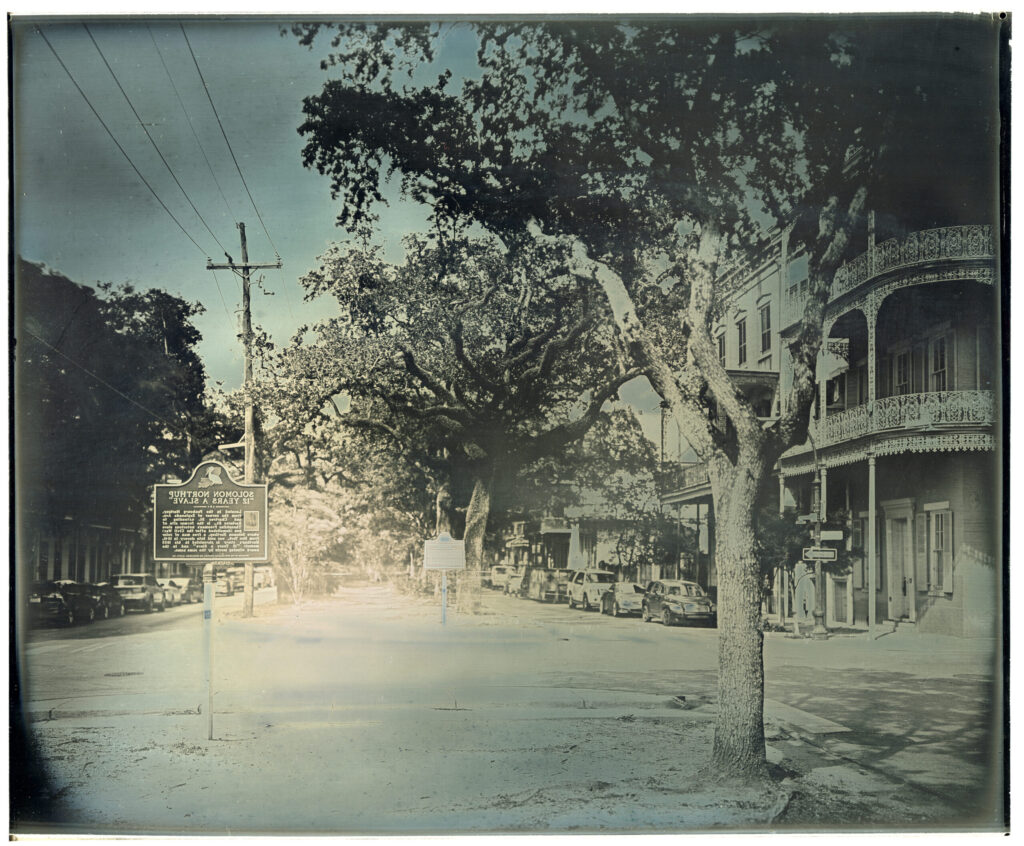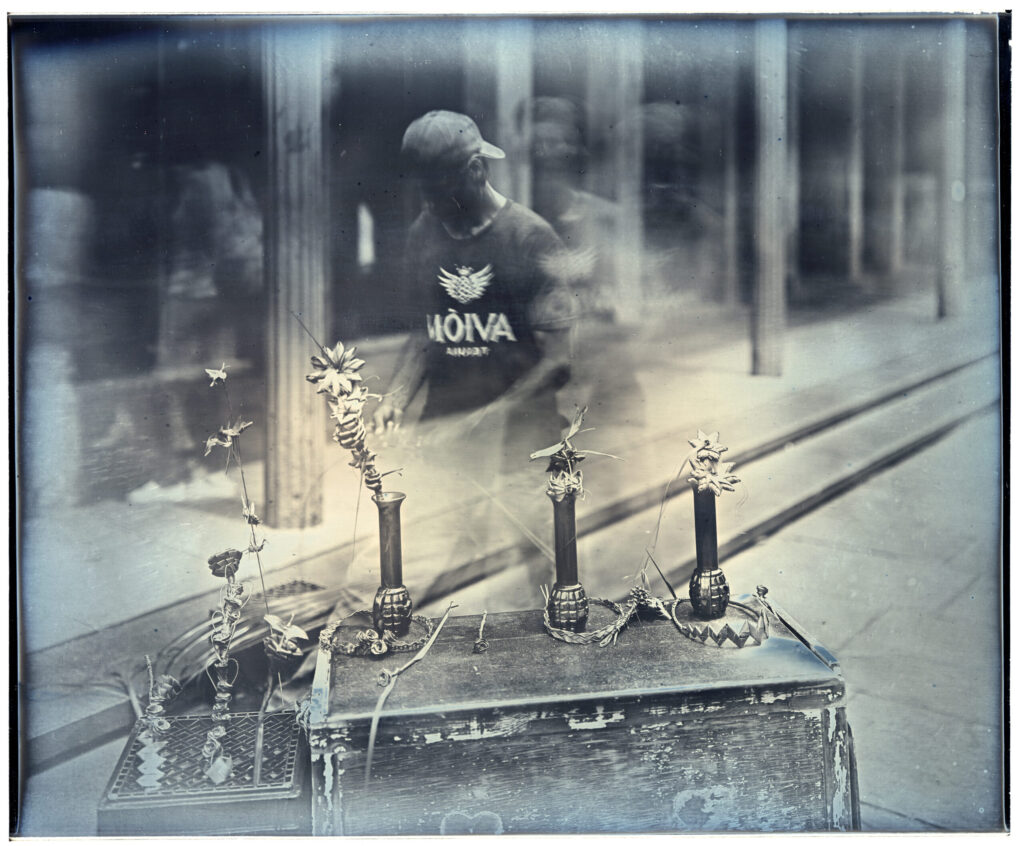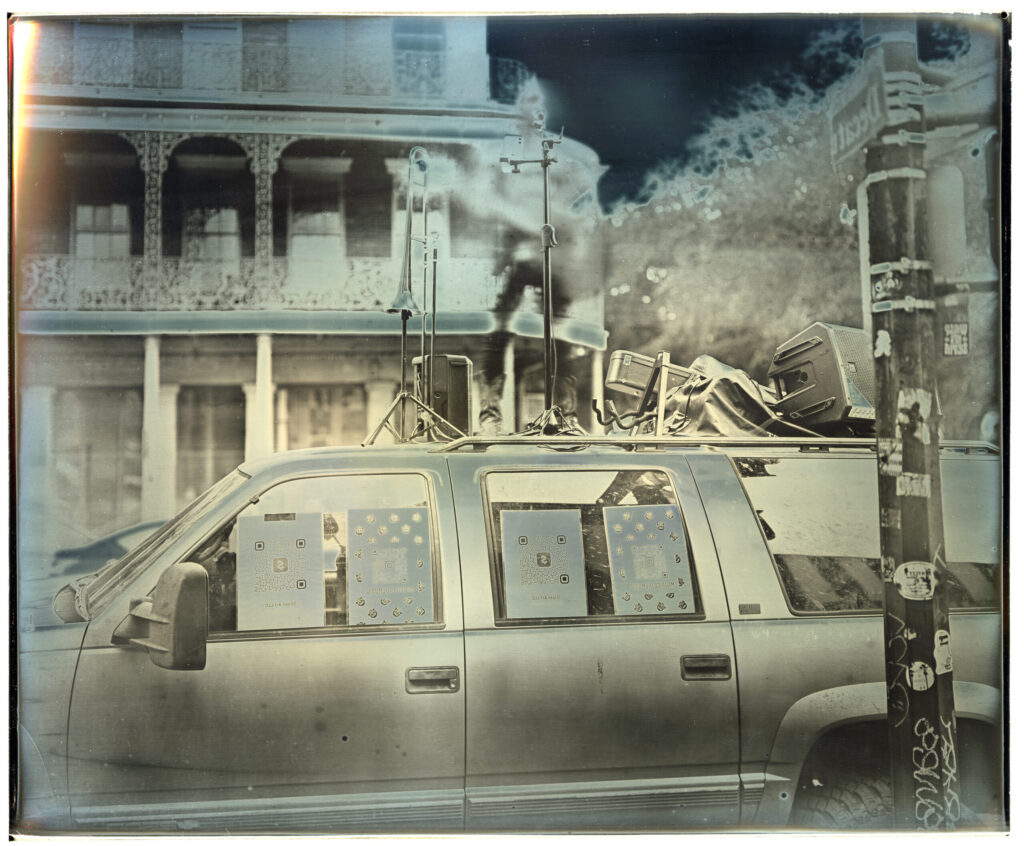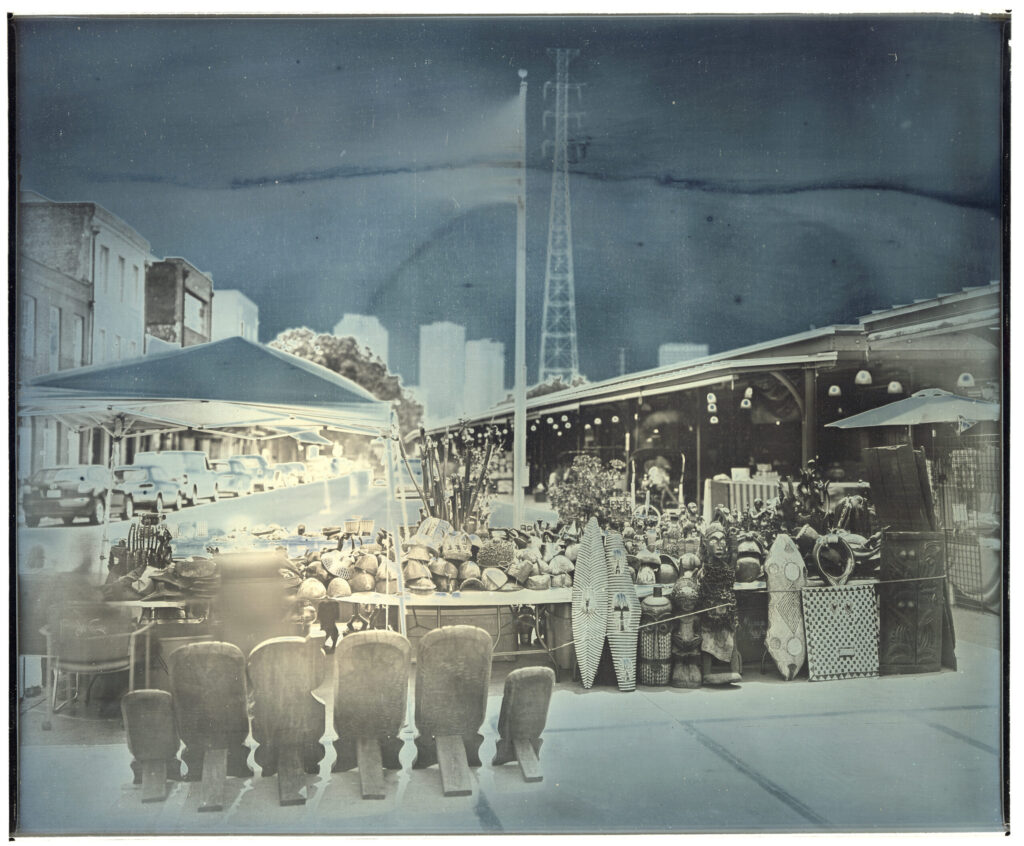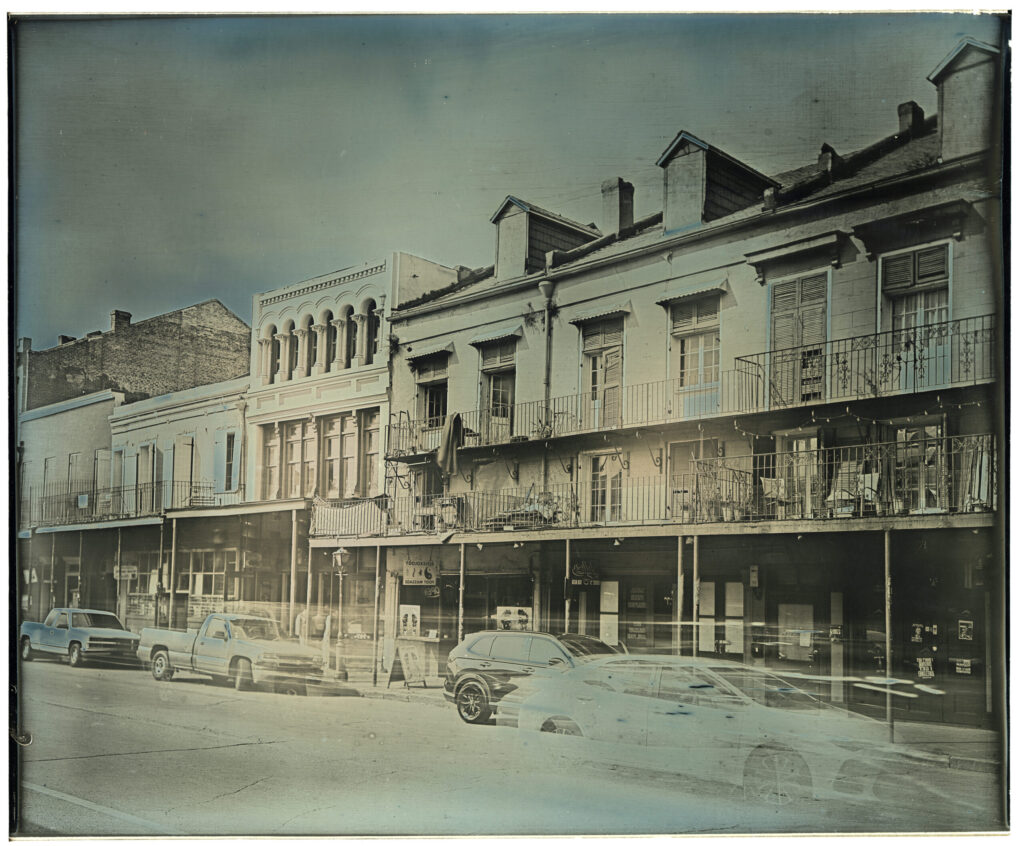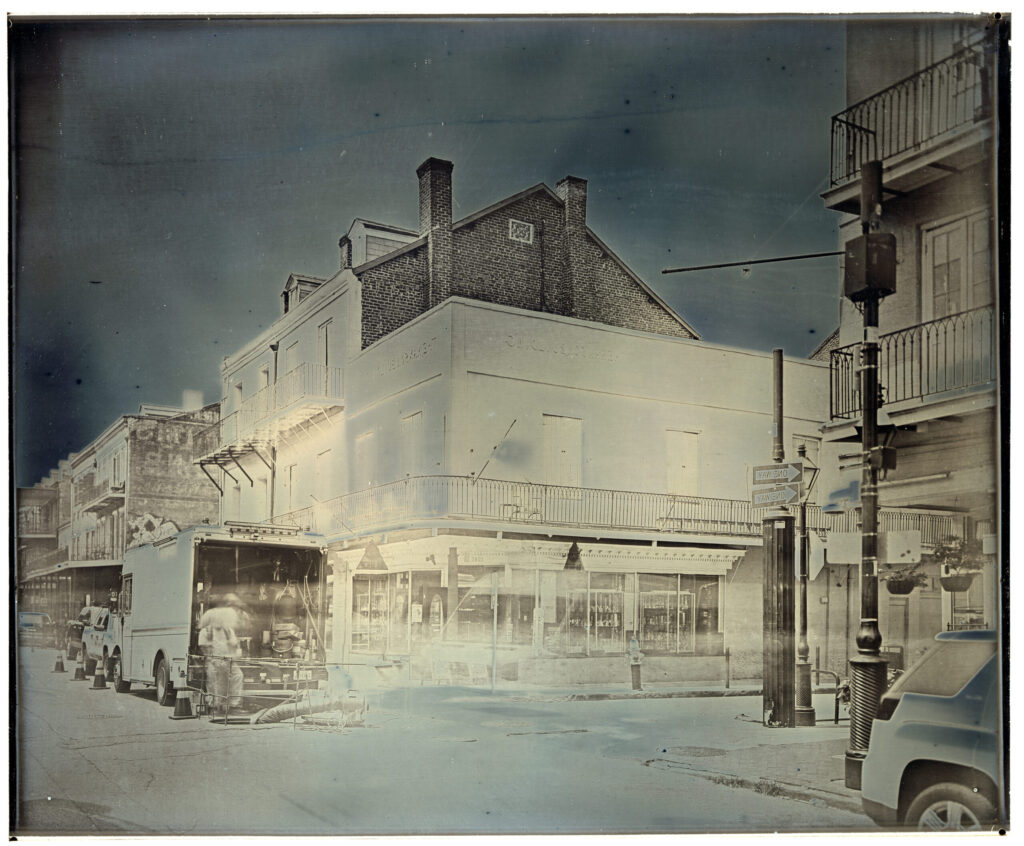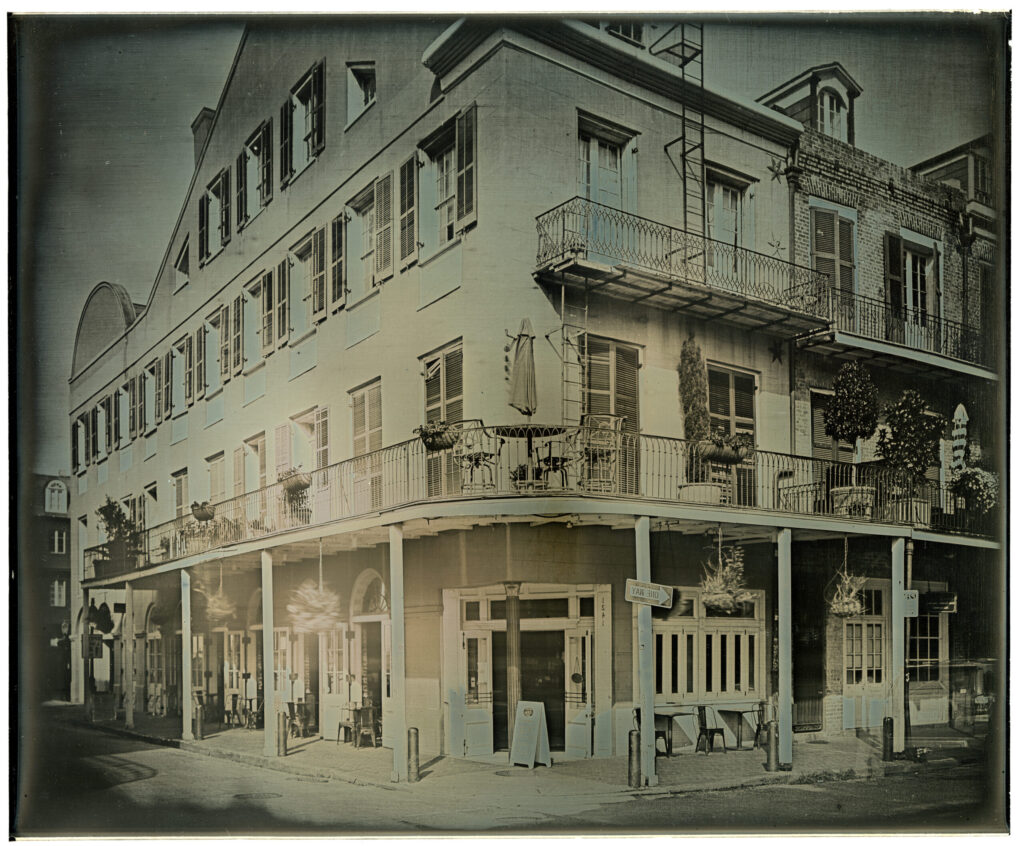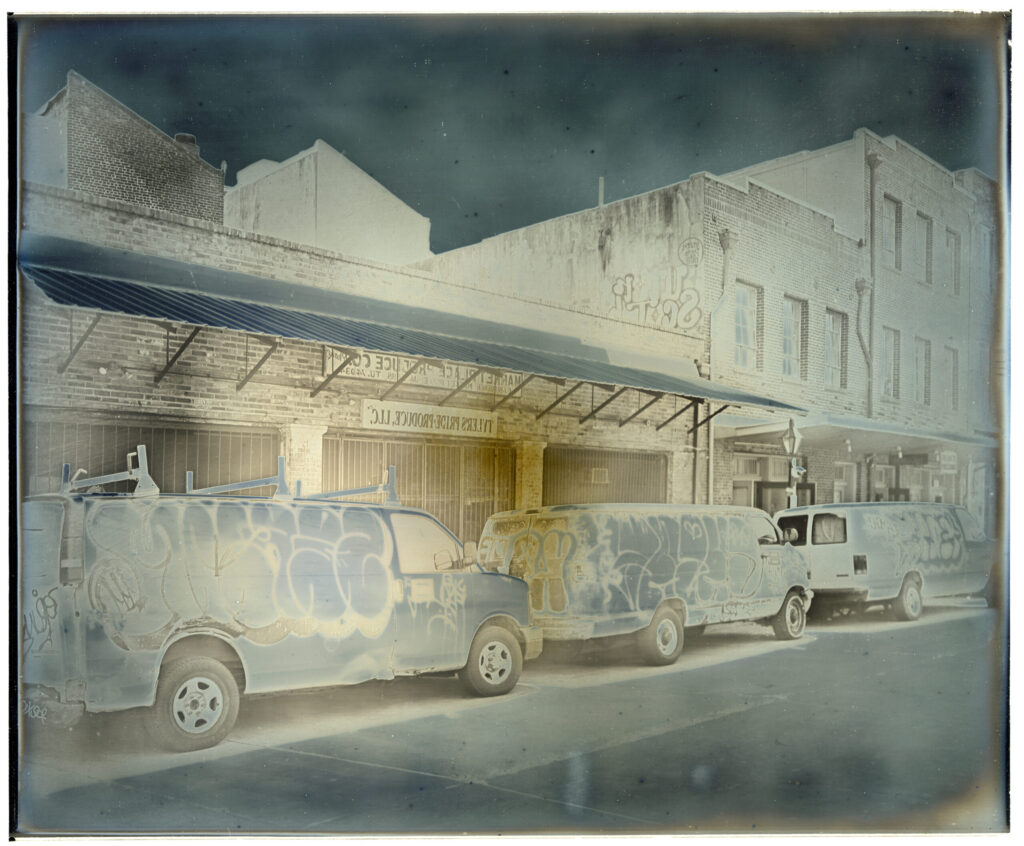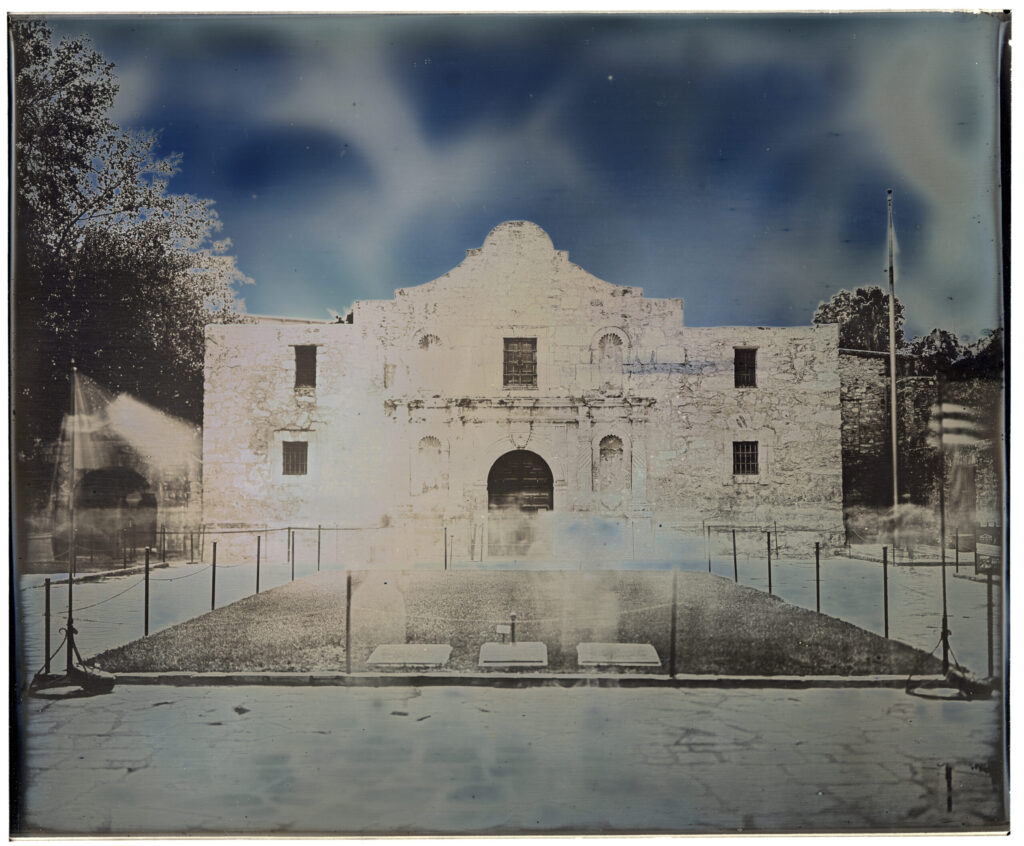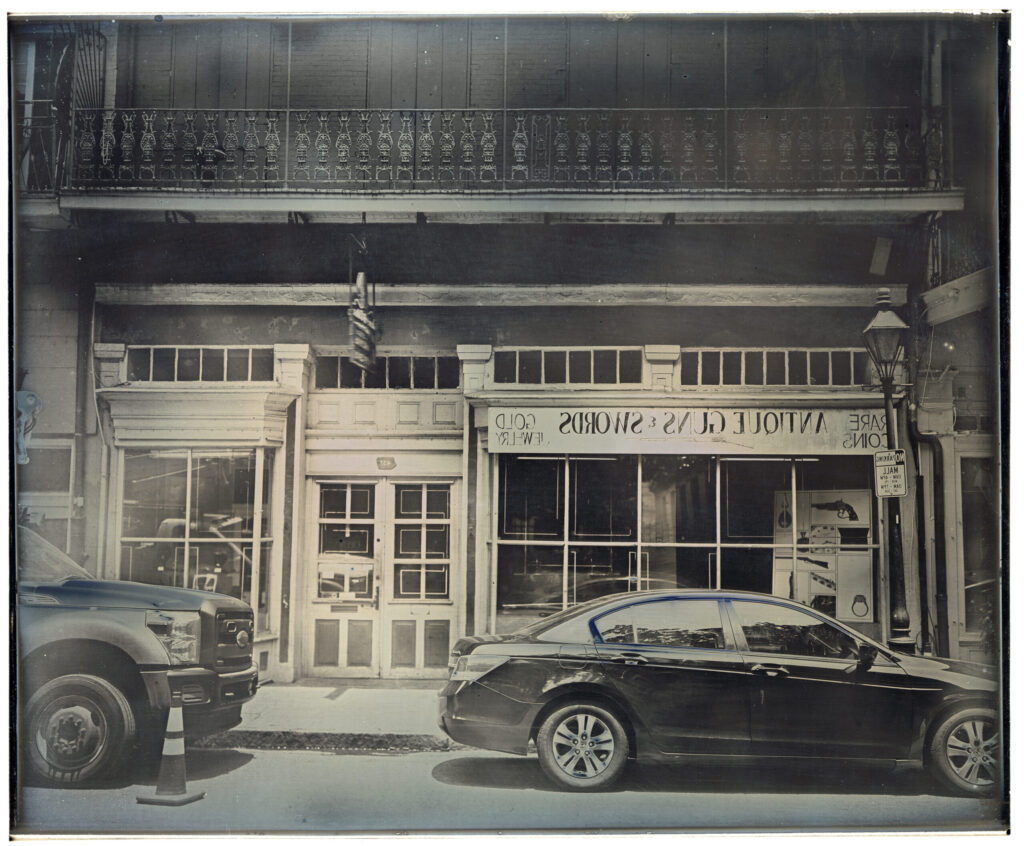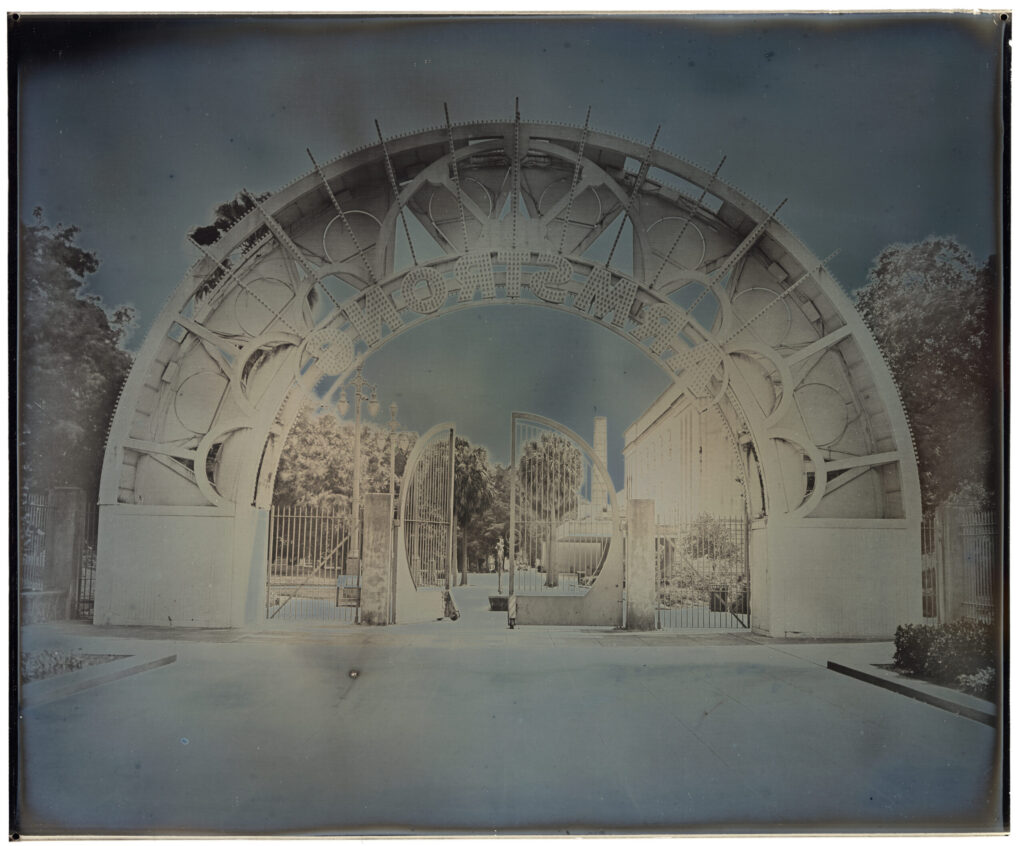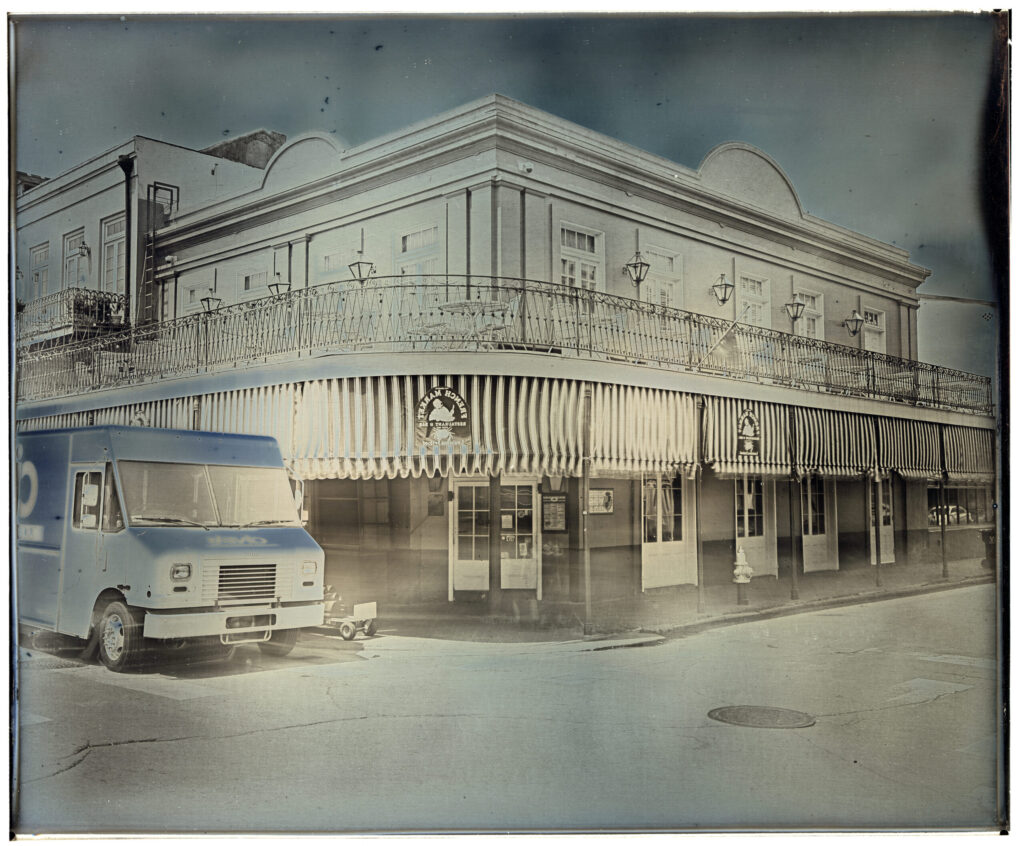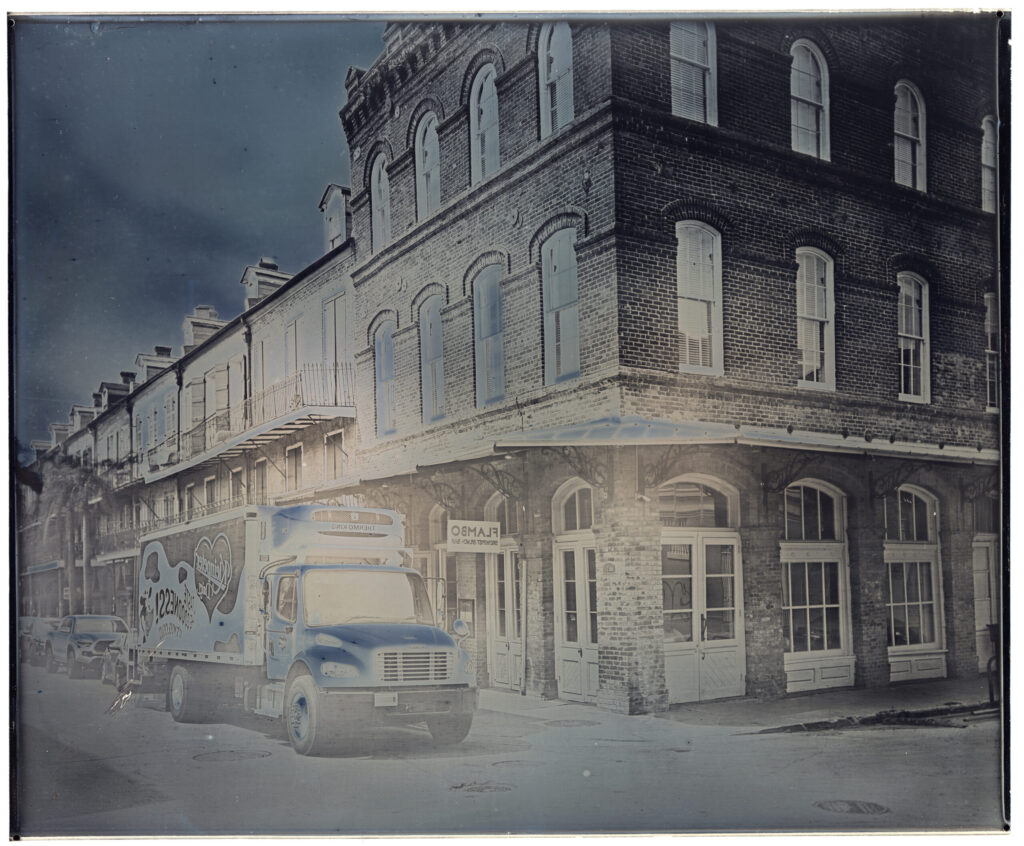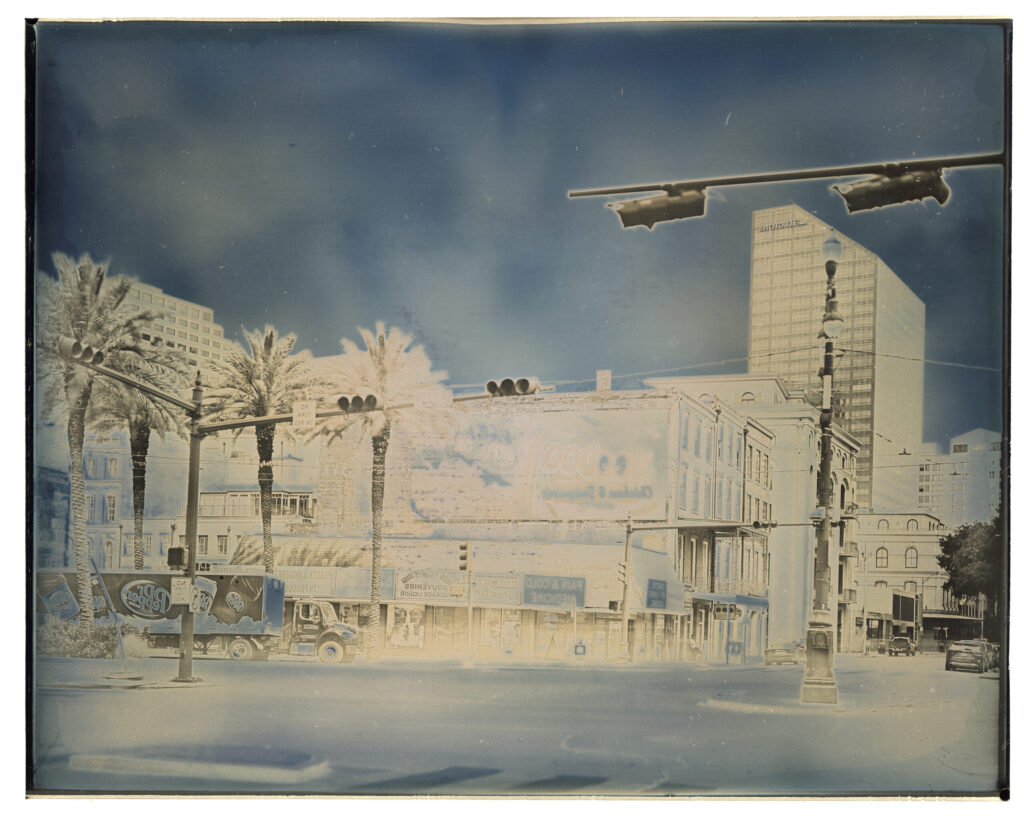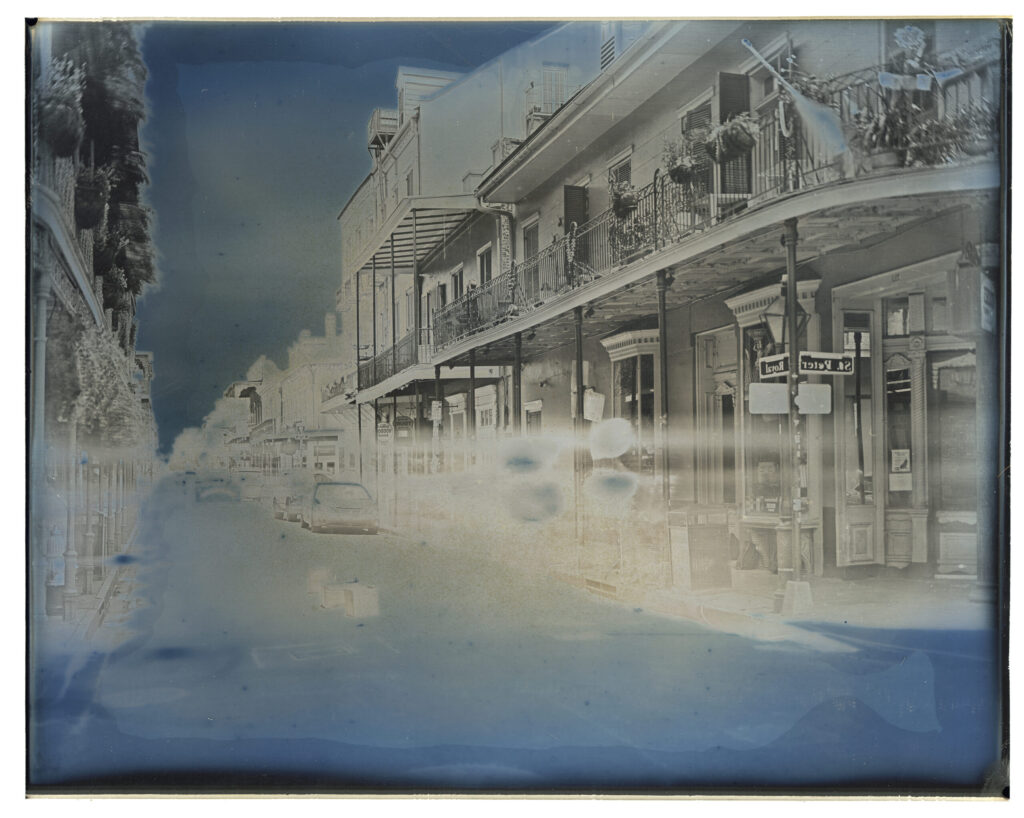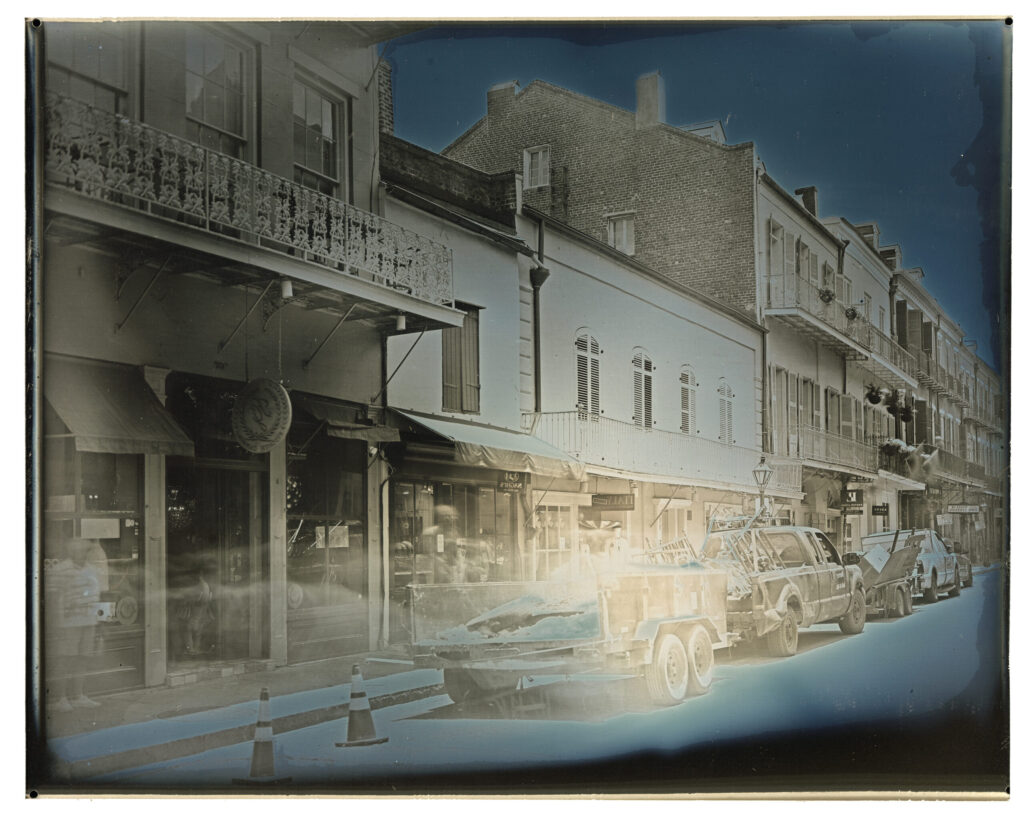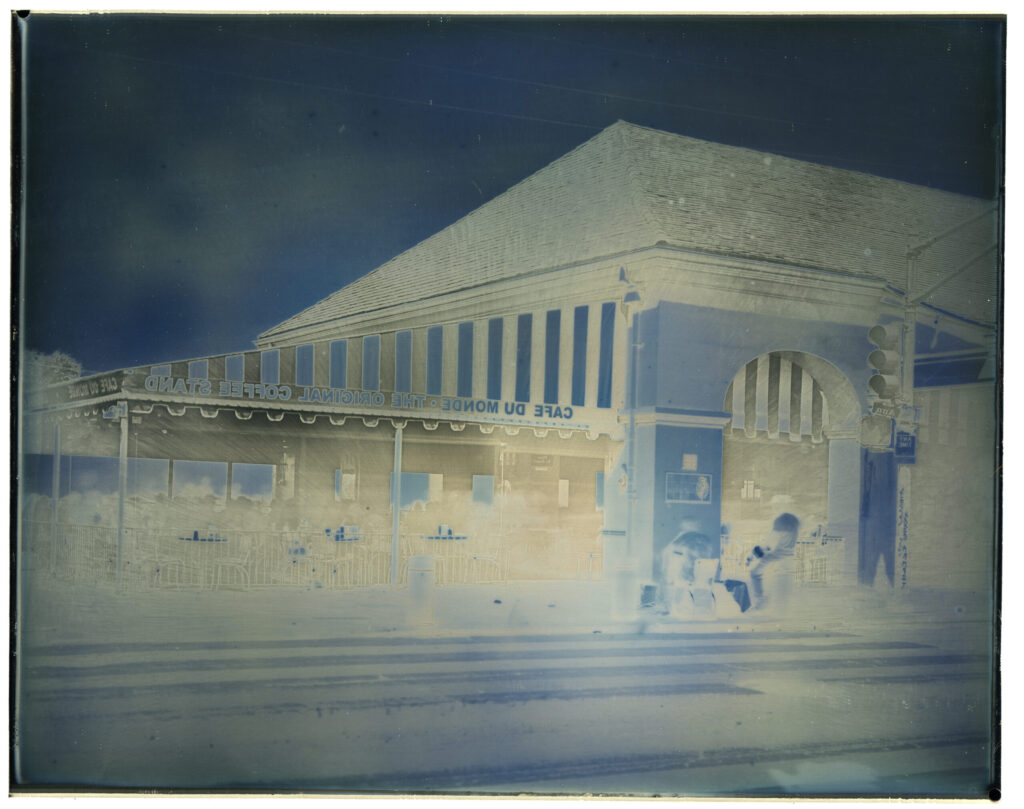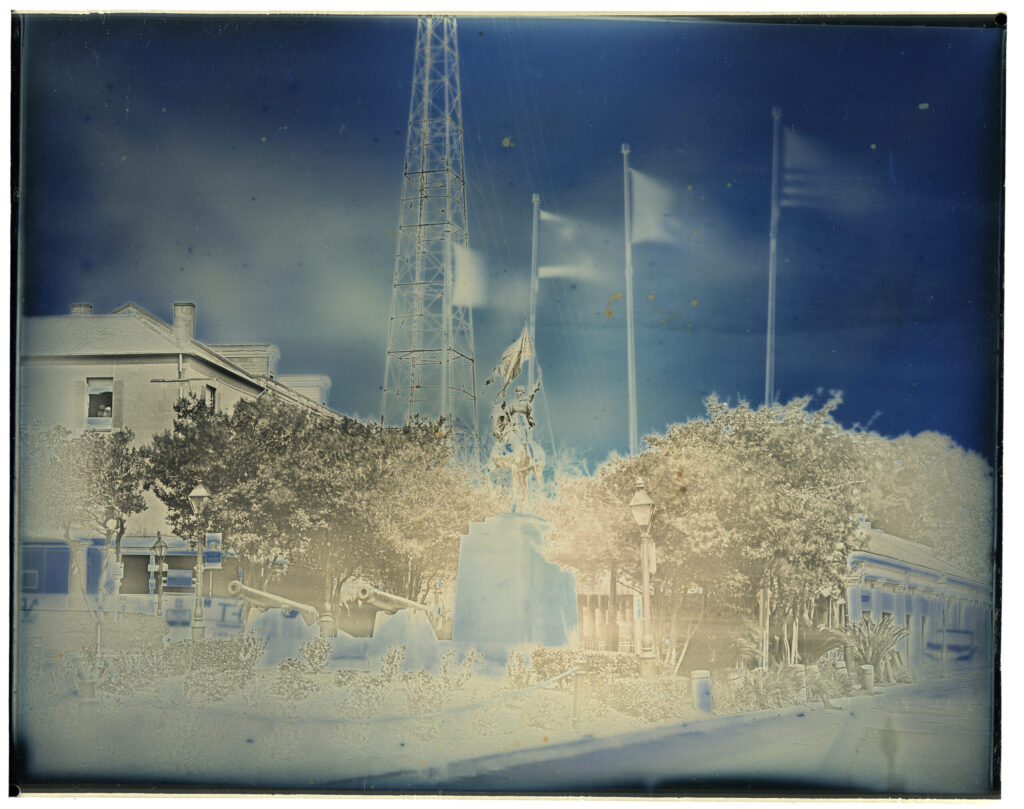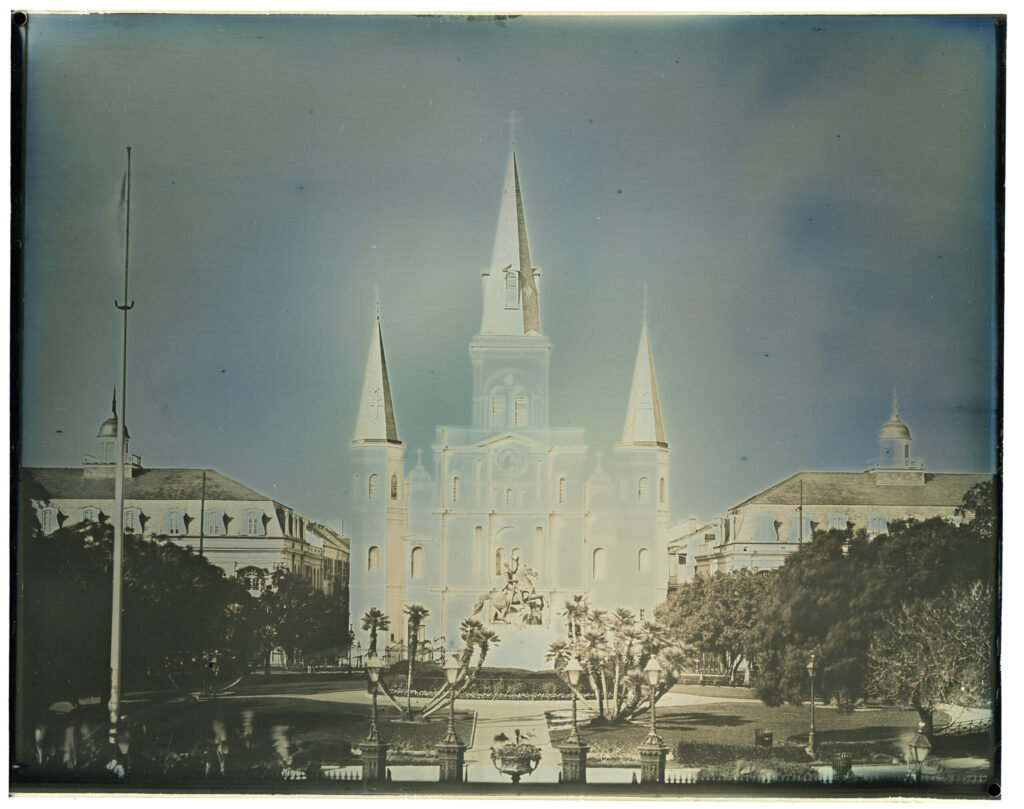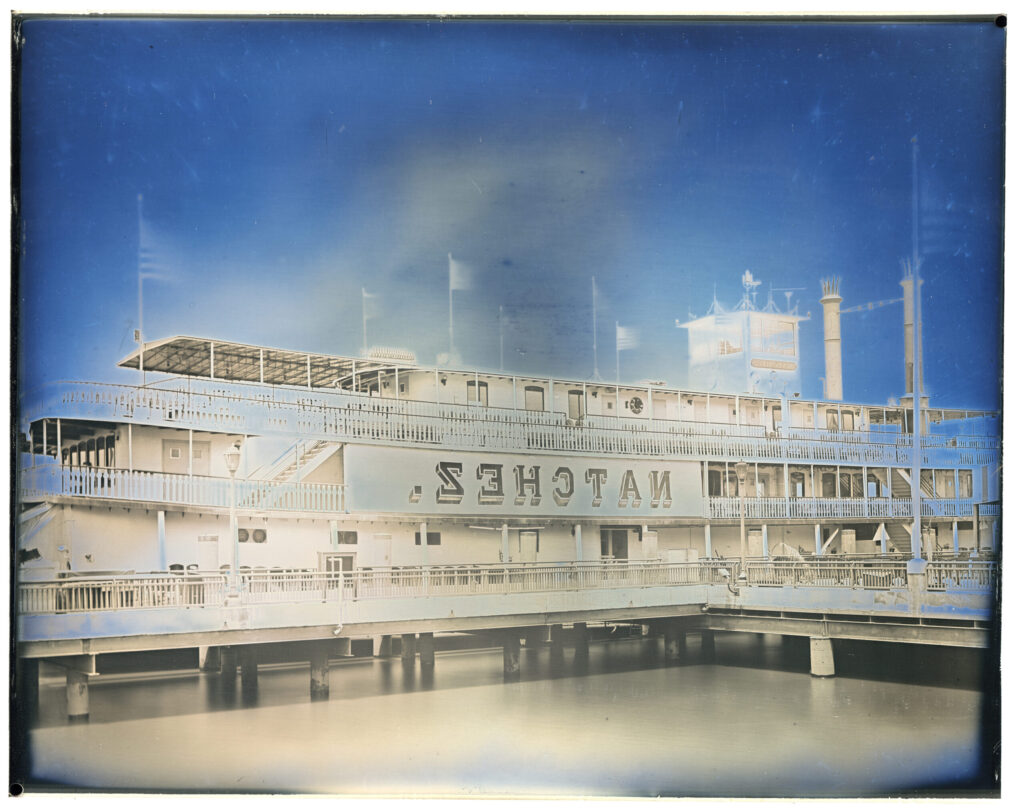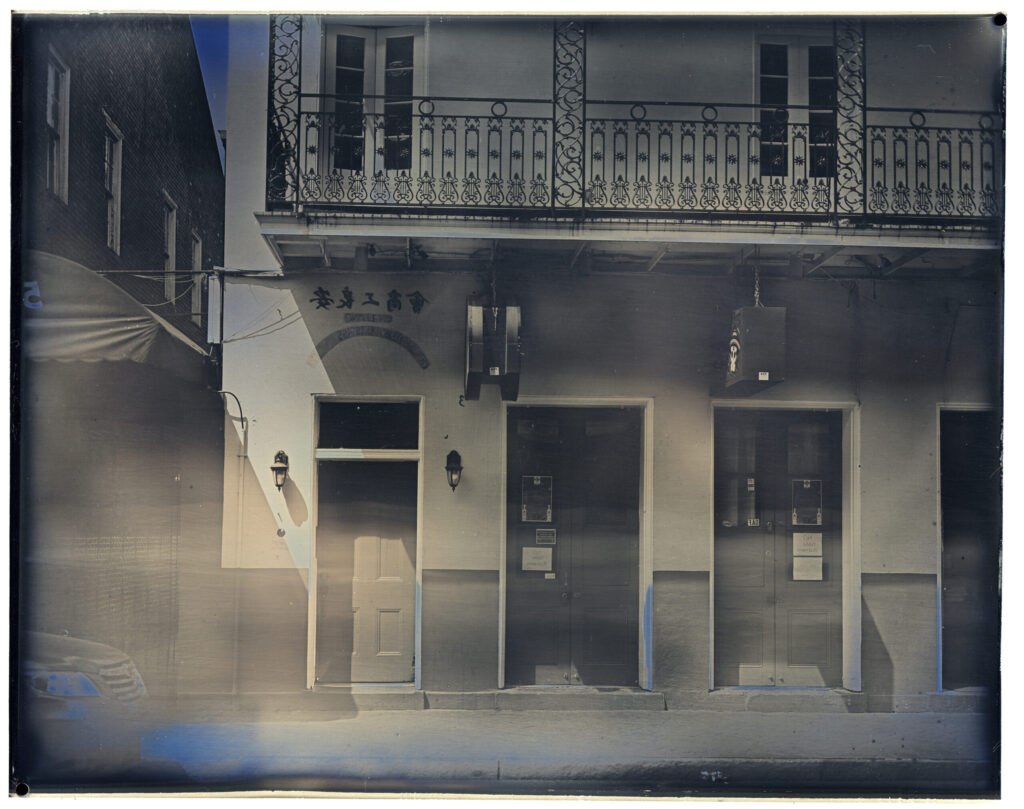The French Quarter of New Orleans is a place where time lingers—where wrought-iron balconies whisper secrets and gas lamps flicker with stories from generations past. I use the daguerreotype process, one of the earliest forms of photography, to explore the interplay of light, texture, and history in New Orleans’ most storied district. With their mirror-like surfaces and rich tonal depth, daguerreotypes possess an almost ghostly presence—an aesthetic uniquely suited to a place as layered and rich in history as the Quarter. Each plate is a tangible artifact, its silvery image reflecting the physicality of the streets, architecture, and the passage of time. The slow, deliberate nature of this 19th-century process echoes the unhurried rhythm of the French Quarter, where history refuses to fade into the background. Through these images, I aim to evoke a feeling that one is not just looking at the past but standing within it. In a world dominated by the instant and the ephemeral, these daguerreotypes serve as testaments to permanence, memory, and the enduring spirit of place.
Daguerreotypes reveal more than mere surfaces; they distill mood, turning wrought iron balconies into delicate filigree and softening crumbling facades into silvered relics. The reflective nature of each plate transforms the Quarter’s narrow streets and hidden courtyards into luminous, almost spectral landscapes—places where time does not simply pass but accumulates. The long exposures required for this process further blur the distinction between past and present, remaining silent yet expressive in their endurance. These daguerreotypes serve as mirrors and memories, inviting viewers into a world where time slows and the architecture breathes.
Founded in 1718 as the core of New Orleans, this district has seen empires rise and fall, witnessed the blend of French, Spanish, Creole, and American cultures, and endured the relentless passage of time. Its streets, lined with centuries-old buildings, resonate with jazz melodies, stories of enslaved individuals, and the footsteps of generations before us. From the grand Creole townhouses featuring iron-laced balconies to the hidden courtyards and weathered alleyways, every brick and beam carries the weight of a past often romanticized or neglected.
Daguerreotype plate sizes are “8 x 10” and “10 x 12” inches.

